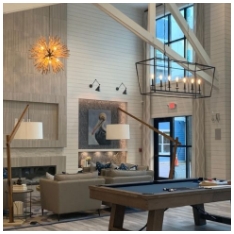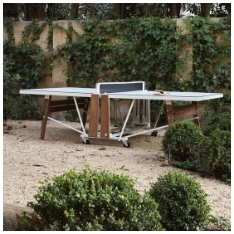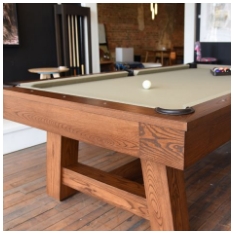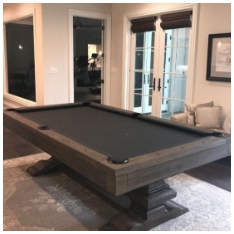When people hear the words pool table and billiards table, they often assume they are the same. While both are used for cue sports, they have distinct characteristics in terms of size, table design, and the games played on them. Understanding these differences is essential if you are buying a table, improving your game, or simply curious about cue sports.
This guide will explore the differences between a pool table and a billiards table in detail, covering their origins, measurements, playing surfaces, and the types of games each table supports.
Understanding the Terminology
What Is a Pool Table?
A pool table is specifically designed for the game of pool, which has many variations such as eight-ball, nine-ball, and straight pool. Pool tables usually have six pockets — one at each corner and one in the middle of each long side — where balls are pocketed.
The standard size for a pool table is 7 feet, 8 feet, or 9 feet long, with the 9-foot table being most common in professional tournaments. Pool balls are smaller compared to billiard balls, and the cloth surface is designed to allow moderate ball speed and controlled spin.

What Is a Billiards Table?
The term “billiards” can refer to cue sports in general, but in its strict sense, a billiards table means a table designed for carom billiards. This version of billiards does not have pockets at all. Instead, players score points by striking the cue ball so it hits the opponent’s ball and one or more cushions in a single shot.
Billiards tables are larger than most pool tables, typically measuring 10 feet by 5 feet. The balls used are slightly bigger, and the cloth surface is faster to allow the balls to travel smoothly across the table without pockets to slow them down.
Key Differences Between a Pool Table and a Billiards Table
Table Size and Dimensions
- Pool Table: Usually 7–9 feet long, with six pockets.
- Billiards Table: Typically 10 feet long, with no pockets.
The difference in size affects gameplay — a billiards table provides more space for cue ball movement and complex shot planning, while a pool table focuses on precision in pocketing balls.
Playing Surface and Cloth
Pool tables often use a wool-nylon blend cloth, offering controlled speed for pocket shots. Billiards tables usually feature a finer, faster cloth to accommodate the longer travel distances of the balls.

Balls and Equipment
- Pool Balls: Smaller (around 2.25 inches in diameter) and include both solid and striped balls plus a cue ball.
- Billiards Balls: Slightly larger (around 2.375 inches) and usually come in just three colors — white (cue ball), yellow (second cue ball), and red (object ball).
Rules and Gameplay
- Pool: Players score by pocketing balls according to the rules of the chosen game format.
- Billiards: Players score points by hitting both the opponent’s ball and the object ball with one stroke, often with additional points for cushion rebounds.
Why the Confusion Between Pool and Billiards Tables?
The confusion mainly comes from language use. In some countries, “billiards” is a blanket term that covers all cue sports, including pool, snooker, and carom billiards. In North America, “pool” usually refers to pocketed cue games, while “billiards” refers to the pocketless version.
This overlap in terminology often leads people to assume both tables are the same when they are designed for different types of games.
Which Table Should You Choose?
The choice between a pool table and a billiards table depends on the type of game you want to play:
- Choose a Pool Table If: You enjoy a variety of pocket games, from casual eight-ball to competitive nine-ball. Pool tables are more common in homes and recreation centers.
- Choose a Billiards Table If: You prefer a strategic, pocketless game that focuses on angles, ball control, and precision shot-making.
Final Thoughts
So, is there a difference between a pool table and a billiards table? Yes the two have distinct designs, playing styles, and histories. While they share a common heritage in cue sports, a pool table is made for pocketed games, and a billiards table is for pocketless carom play.
Understanding these differences will help you choose the right table for your space, skill goals, and playing preferences. Whether you prefer the tactical challenge of billiards or the fast-paced excitement of pool, each offers a unique and rewarding gaming experience.





